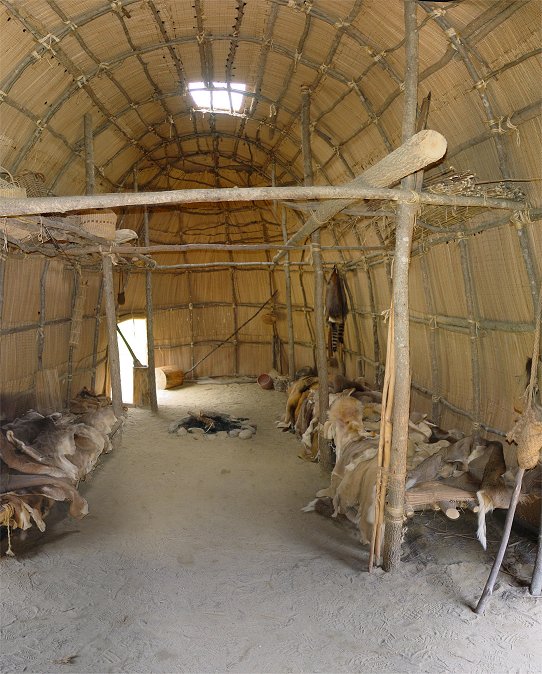
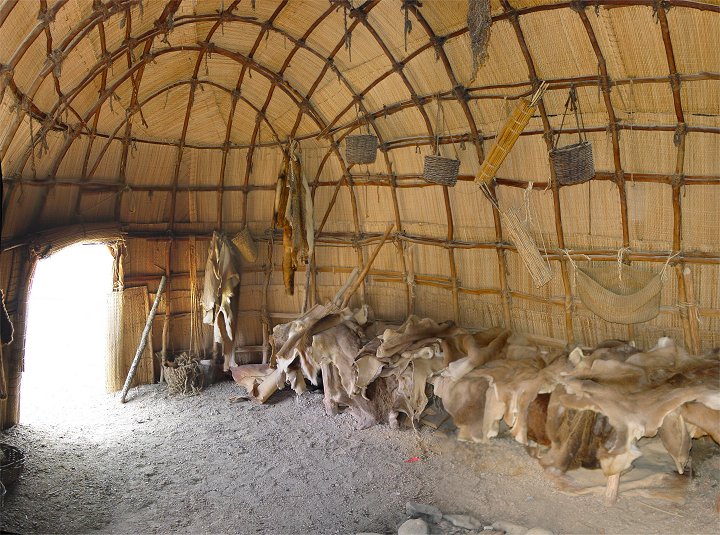
Jamestown
The English were relatively late in colonizing the Western Hemisphere. The Spanish dominated the Caribbean, Mexico, and South America and sent a few men as far north as Virginia, but the natives there managed to rid themselves of the visitors. St Augustine in Florida was successfully settled by the Spaniards, they even sent settlers as far away as the interior of modern South Carolina. This settlement was abandoned, however, with the settlers possibly becoming the mysterious Melungeons even now found in the mountains of the South.
Roanoke Island in modern North Carolina had been the site of a failed English settlement in the 1580s, with the land being named "Virginia" after the alleged virtue of Queen Elizabeth, suspected by some modern historians of having had several illegitimate children. The English colonization effort re-started several years later under the Virginia Company. In 1607, the first permanent English settlement was founded at Jamestown on the James River, both named after King James of Bible fame, the Scottish successor to Elizabeth's English throne who was also known for his "male favorites". A settlement in Maine the same year failed, and Jamestown very nearly met the same fate. The plan had been the Spanish colonization model - getting the Indians to work and farm for the English - but the natives had other ideas. Contrary to popular belief, the settlers were not lazy. Bad weather and a location good for defense but surrounded by unhealthy swamps conspired against the settlers. Starvation nearly killed off all the colonists, the remainder of which actually packed up and left only to turn around in the James River when they met a newly arriving batch of settlers. When the first English women showed up in any numbers, the Indians clearly saw that the English were there to stay, which strained relations and unavoidably lead to conflict. In 1622, a massive attack killed roughly one third of the colonists. Miraculously the colony survived - and eventually expanded and thrived, with tobacco becoming its primary reason for existence starting at around 1614.
Contrary to the impression many people get from popular culture, the Pilgrims arrived in America thirteen years after the Jamestown colonists - in 1620 - by which time Virginia had survived its hardest of times, including starvation, and had gotten its first large shipment of women and African slaves. Virginia had also formed the first representative assembly in the New World. Although the Pilgrims have gained a questionable reputation for religious toleration, Virginia's Anglican traditions provided the framework for later religious freedom. In a variety of ways Jamestown is the birthplace of America.
 |
 |
The English obviously weren't Virginia's original inhabitants. These dwellings at the state's living history park represent the natives, known to the English as the Powhatan.
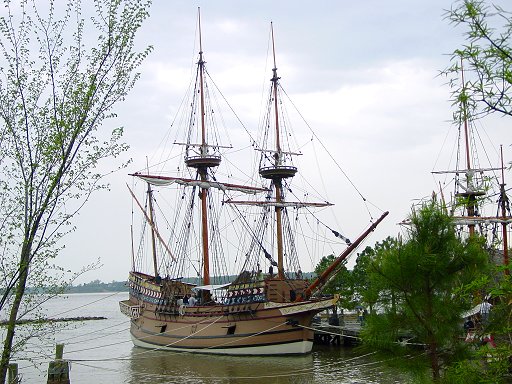
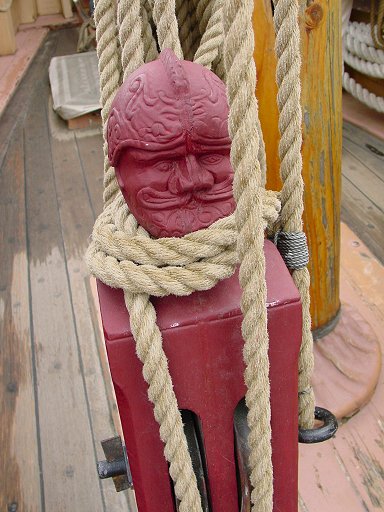
The state park includes reconstructions of the three ships which brought the first colonists.

Isthmus
This nearly 360 degree panorama shows the isthmus over which the modern road passes which connects Jamestown in the right-center of the pan with the mainland on the left. At the time of the settlement, there was not a complete connection with the mainland as there is now. The James River is on the far left and also on the right. Masts from the reconstructed ships at the state park are on the left.

| Inside James Fort The panorama above is from the inside of James Fort, the subject of considerable archeological investigation in recent years. Until recently it was assumed that the river had eroded most of the area of the original settlement and fort. In actuality, a sea wall installed in the early 1900s had unknown to anyone saved much of the site. This wall was constructed at the urging of the Association for the Preservation of Virginia Antiquities, a private organization founded in 1889 to preserve the site. The APVA still owns the heart of the historic area. The James River can be seen on the far left and far right. The modern wooden palisade marks the location of the fort's walls. It measures approximately 100 yards by 100 yards by 140 yards. The stone church is a reconstruction of a structure built after the settlement had expanded beyond the fort. |
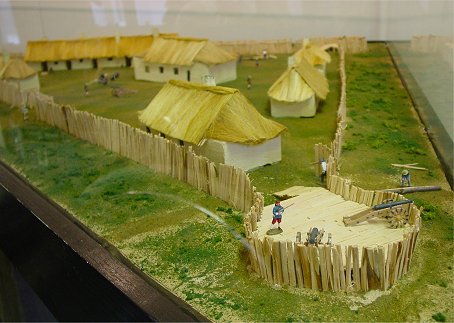 The National Park includes this model of James Fort, which protected James Town. The defenses were a necessary precaution against the natives and the Spanish, both of whom regarded the land as their own. |
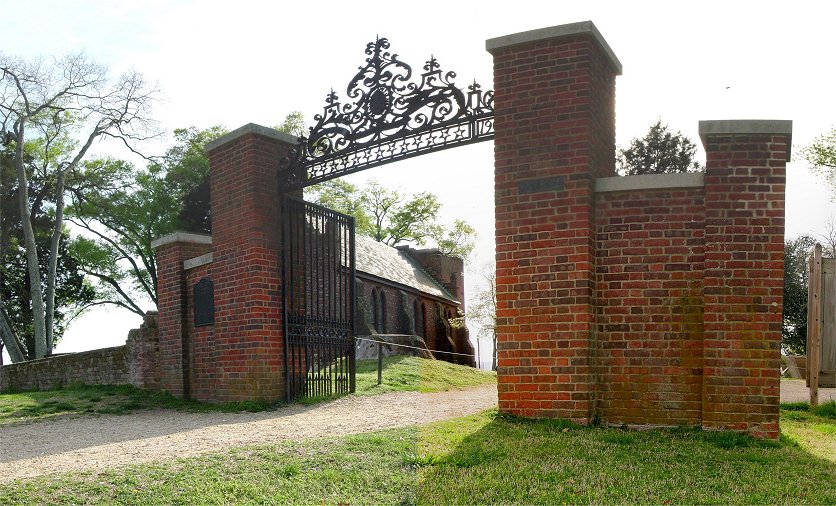
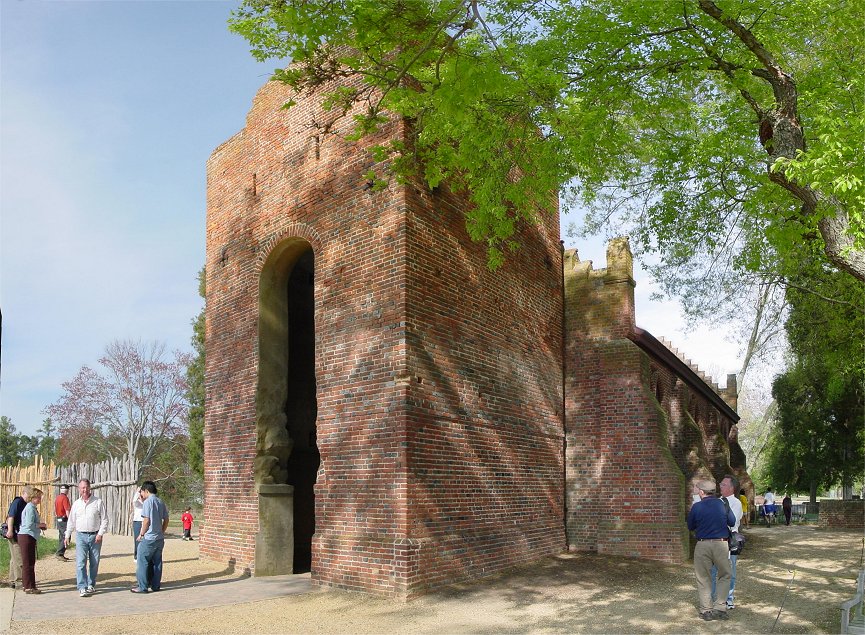
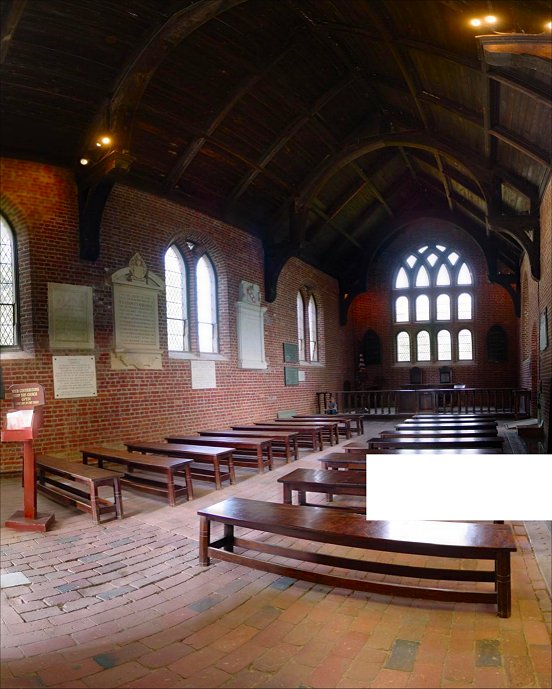
Church
Near the site of this brick church reconstructed by the APVA was an earlier church in which it is thought that the first representative assembly of the New World met. The original brick church at this site may have been built in 1639.
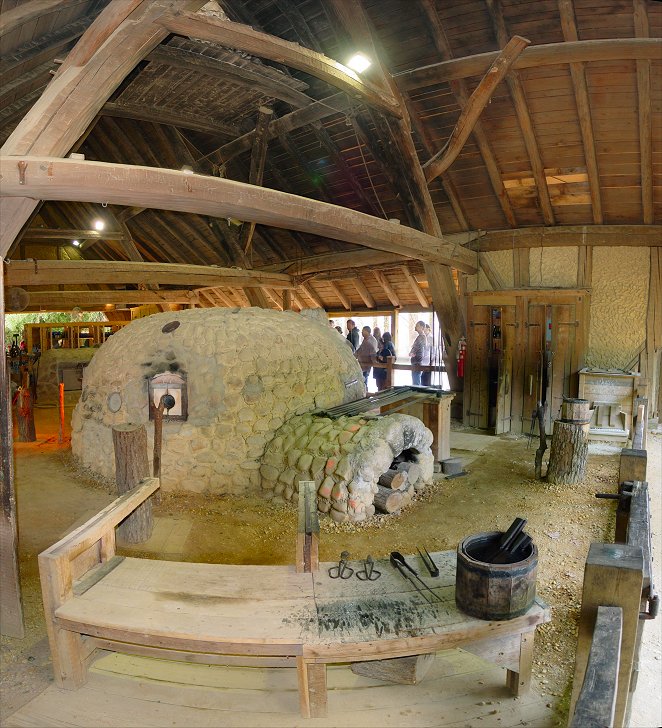 |
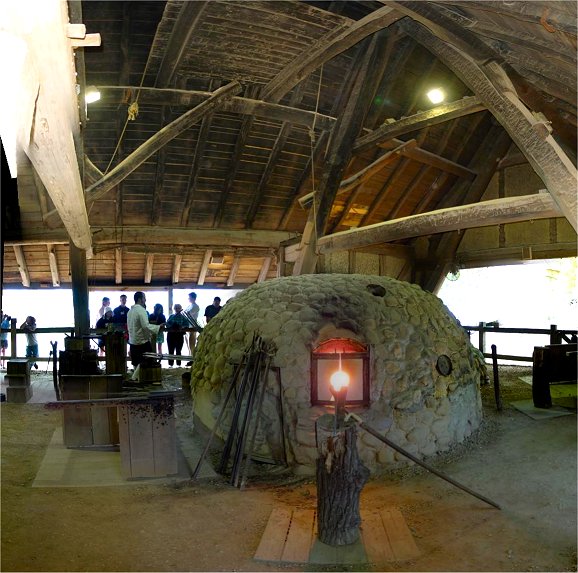 |
National Park Service Reconstructed Glasshouse
Like all companies, the Virginia Company was in business to make money for the shareholders. The settlement of an entire continent and the founding of a new nation weren't part of their plan, although it was the eventual result. Glass making was among the many industries attempted by the colonists to make money in the New World.
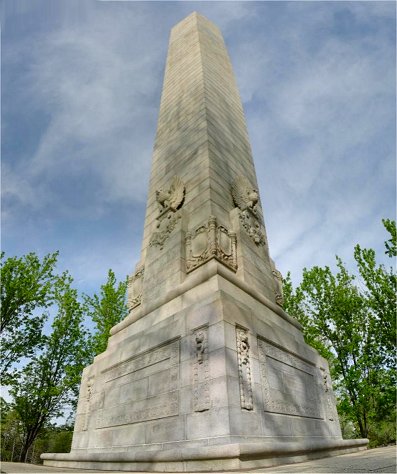
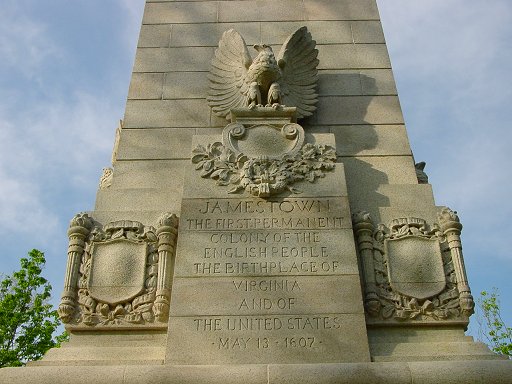
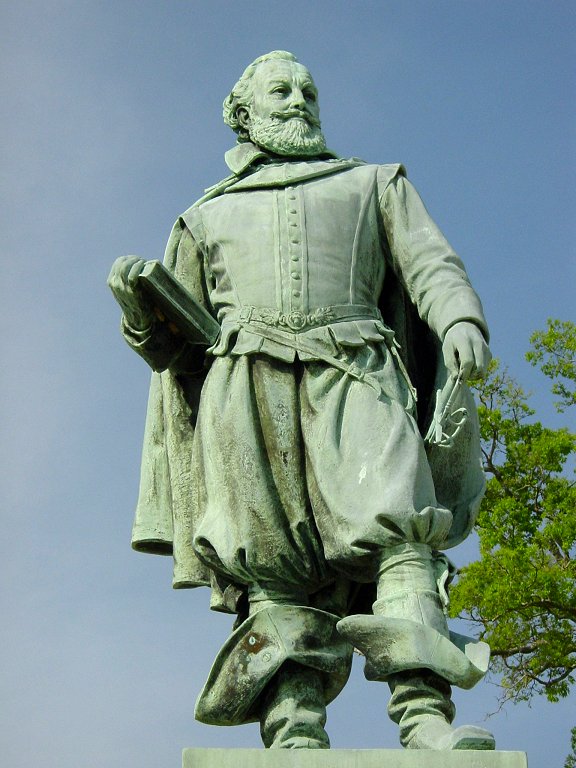
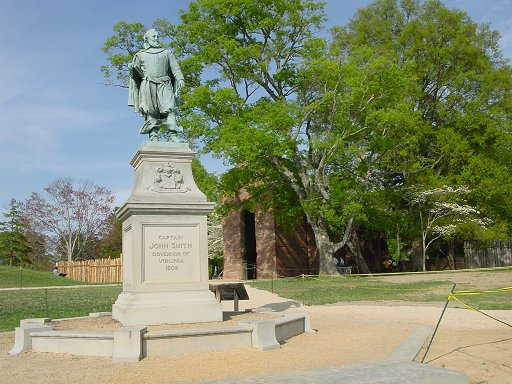
John Smith was a soldier of fortune whose leadership was vital to the colony's survival.
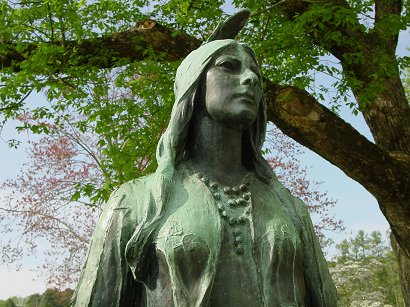
Pocohontas was the daughter of Chief Powhatan. She is said to have saved John Smith's life. She later married John Rolfe and traveled to England, where she died.

New Town
The town eventually outgrew the fort, with the new town forming a grid pattern to the east. The river is visible in the background. The near foundation may have been a tavern.
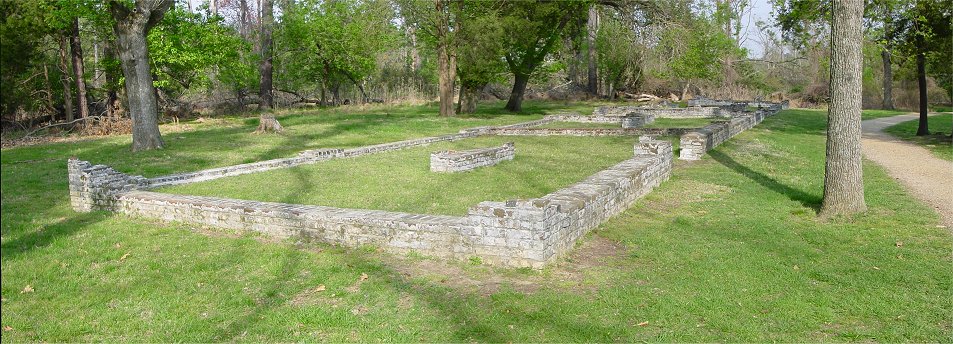
Jail
These rowhouses are thought to have housed a jail and possibly served some other government function. Like many other buildings, this one was damaged in Bacon's Rebellion in 1676.

Row Houses by River
These foundations may have been Governor Berkeley's house and the colony's capital from the mid 1640s until the Statehouse Complex on the west of the island was begun.

Statehouse Complex and Archerarium
This small hill to the west of the fort was used as a burying ground during Starving Times. Statehouse construction began in 1660s, and the facility was added to up until the capital was moved to Williamsburg near the turn of the century. At the time of my visit in 2006, an "Archerarium" was being built atop the statehouse foundations to help interpret Jamestown to tourists. On the left you can see the isthmus connecting the island to the mainland.
Back to Revolutionary War Virtual Battlefield Tours